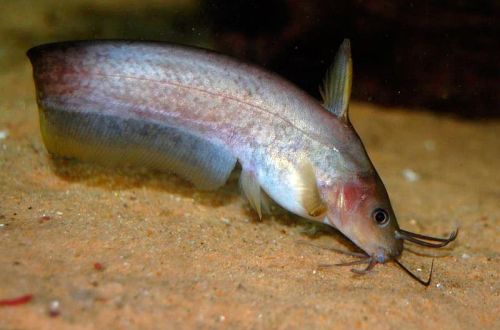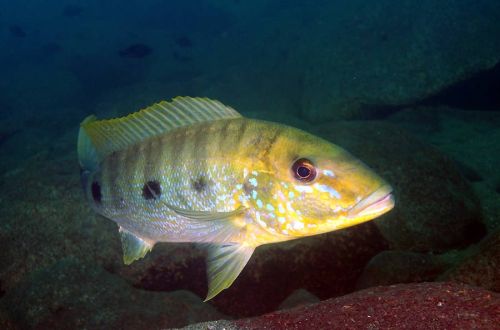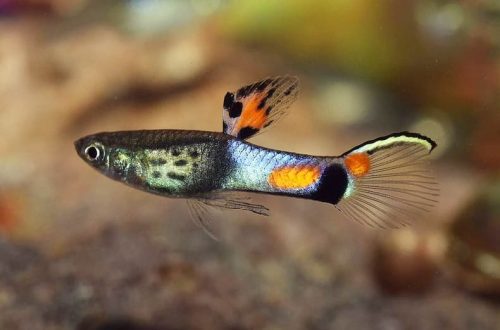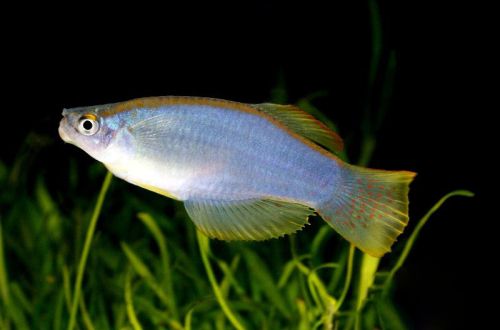
Australian catfish
The Australian catfish, scientific name Neosilurus brevidorsalis, belongs to the family Plotosidae (Eel catfish). An exotic representative of catfish from distant Australia. Rarely seen in hobby aquariums. Unpretentious, considered easy to keep and compatible with many freshwater fish.

Contents
Habitat
It comes from northern Australia and the southern part of the island of Papua New Guinea. Inhabits most major river systems in the region. It is not associated with any particular biotope, it is found everywhere along the entire course.
Brief information:
- The volume of the aquarium – from 250 liters.
- Temperature – 20-28°C
- Value pH — 6.0–7.5
- Water hardness – 2–15 dGH
- Substrate type – any
- Lighting – subdued
- Brackish water – no
- Water movement – light or moderate
- The size of the fish is about 20 cm.
- Food – any sinking food
- Temperament – peaceful
- Content alone or in a group
Description
Adult individuals reach a length of about 20 cm. The body is elongated, somewhat flattened laterally. The tail as such is absent, being a continuation of a long anal fin, stretching almost from the middle of the body. The rest of the fins are short. A similar structure determined its way of swimming – wavy. Swims like an eel. The coloration depends on the specific region of origin and varies from pale pink to dark gray. Sexual dimorphism is weakly expressed, males and females are practically indistinguishable.
Food
An omnivorous species, it feeds on everything that it can find and swallow. In the aquarium, you can serve a variety of popular foods in dry, fresh and frozen form. The only condition is that they must be sinking, since the catfish reluctantly floats to the surface.
Maintenance and care, arrangement of the aquarium
The optimal size of the aquarium for 2-3 fish starts from 250 liters. The design is arbitrary, selected at the discretion of the aquarist or based on the needs of other neighboring fish. However, it is recommended to set the lighting level to subdued and form some hiding places where the Australian Catfish can hide.
Maintaining and maintaining an aquarium is relatively simple. Fish adapt to a wide range of acceptable values of hydrochemical parameters, which significantly reduces the complexity of water treatment when replacing part of the water with fresh water weekly. A productive filtration system and other necessary equipment, along with regular procedures for cleaning and removing organic waste, maintain favorable living conditions in a closed ecosystem.
Behavior and Compatibility
Peaceful calm catfish, compatible with many other non-aggressive species. However, indiscriminate eating can endanger fish that are too small to potentially become part of the diet. Intraspecific conflicts have not been identified, they are able to be both alone and in company with relatives.
Breeding / breeding
In nature, the breeding season is directly related to the rainy season, which falls on the summer months (in the Southern Hemisphere from December to March). At this time, partial flooding of coastal zones occurs due to the flooding of rivers. Catfish swim to flooded areas for spawning. One adult fish can produce more than 1500 eggs. Parental instincts are not developed, so the eggs and future fry are left to themselves. At the time of writing, no successful cases of breeding in the home aquarium have been recorded.
Fish diseases
The cause of most diseases is unsuitable conditions of detention. A stable habitat will be the key to successful keeping. In the event of symptoms of the disease, first of all, the quality of the water should be checked and, if deviations are found, measures should be taken to correct the situation. If symptoms persist or even worsen, medical treatment will be required. Read more about symptoms and treatments in the Aquarium Fish Diseases section.





